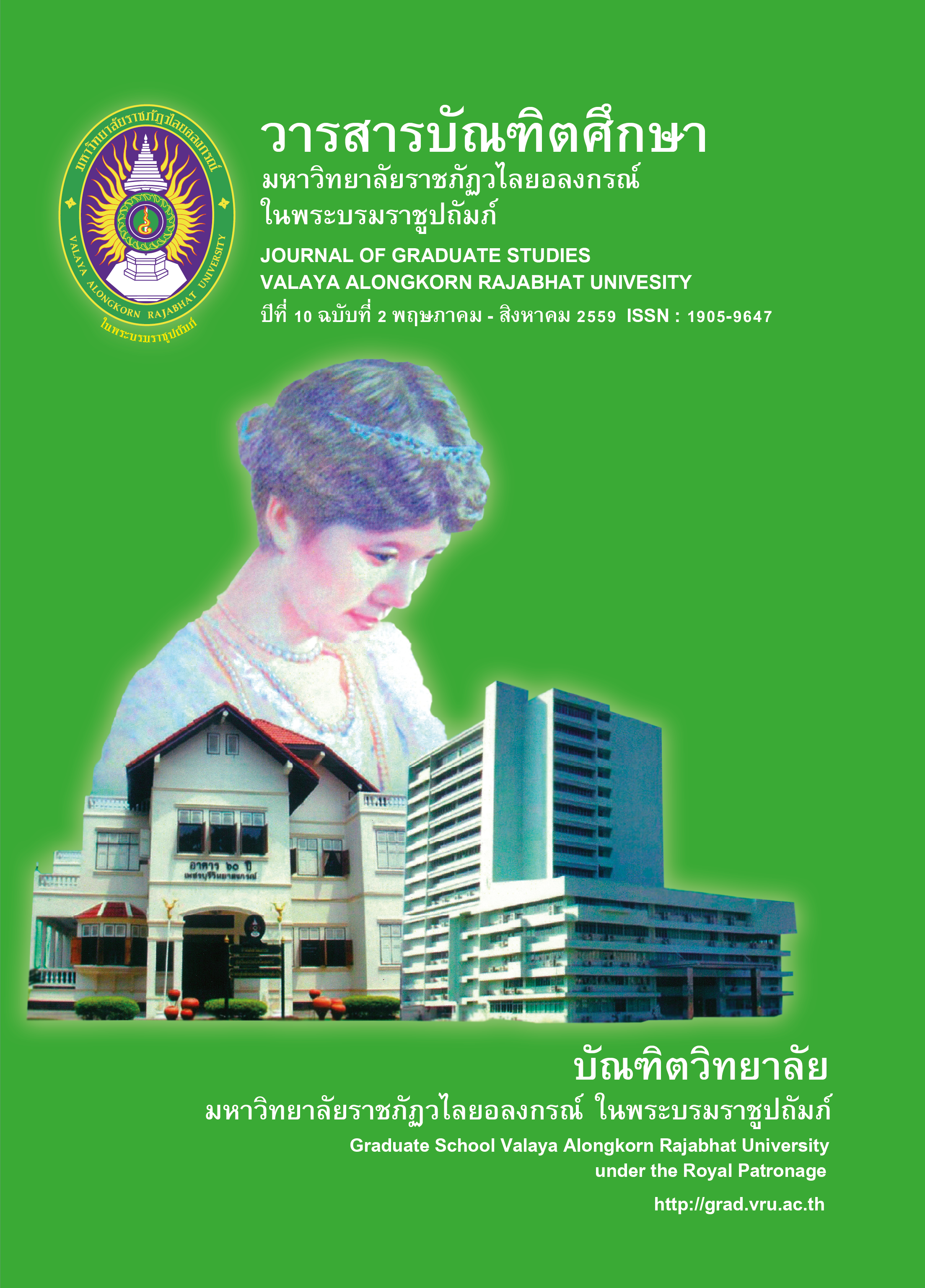การพัฒนารายการโทรทัศน์เพื่อผู้สูงอายุ
Main Article Content
Abstract
บทคัดย่อ
งานวิจัยนี้มีวัตถุประสงค์ดังนี้ 1) เพื่อศึกษาสถานการณ์รายการโทรทัศน์เพื่อผู้สูงอายุของสถานีโทรทัศน์ฟรีทีวี 2) เพื่อศึกษาการเปิดรับความต้องการ และการใช้ประโยชน์รายการโทรทัศน์เพื่อผู้สูงอายุ และ 3) เพื่อศึกษารูปแบบรายการโทรทัศน์เพื่อผู้สูงอายุ ใช้วิธีดำเนินการวิจัยแบบผสมผสาน เรียงตามวัตถุประสงค์ ดังนี้ 1) ใช้วิธีการวิจัยเชิงคุณภาพด้วยการสัมภาษณ์เชิงลึกกับผู้ให้ข้อมูลหลักจำนวน 30 คน มีการเลือกแบบเจาะจง ได้แก่ ผู้บริหารองค์การโทรทัศน์ ผู้เชี่ยวชาญด้านวิชาชีพ ผู้เชี่ยวชาญด้านวิชาการ ผู้เชี่ยวชาญด้านผู้สูงอายุ และผู้สนับสนุนรายการ เครื่องมือที่ใช้ในการวิจัยคือแบบสัมภาษณ์เชิงลึก และใช้วิธีการพรรณาวิเคราะห์ในการวิเคราะห์ข้อมูล 2) ใช้วิธีการวิจัยเชิงปริมาณด้วยการสำรวจกับกลุ่มตัวอย่างจำนวน 400 คนจากจังหวัดเชียงใหม่ นครราชสีมา นครสวรรค์ กรุงเทพมหานคร ชลบุรี และสงขลา ใช้วิธีการสุ่มตัวอย่างแบบหลายขั้นตอน เครื่องมือที่ใช้ในการวิจัยคือแบบสอบถาม สถิติที่ใช้ได้แก่ ร้อยละ ค่าเฉลี่ย ค่าเบี่ยงเบนมาตรฐาน Chi-Square, t-test, One Way ANOVA, Pearson’s Product Moment และ Multiple Regression 3) การประเมินผลและจัดทำรูปแบบรายการโทรทัศน์เพื่อผู้สูงอายุ โดยผู้ทรงคุณวุฒิจำนวน 12 คน ใช้แบบประเมิน และวิเคราะห์ข้อมูลใช้ค่าฐานนิยม (Mode) 2 ใน 3 ของความเห็นผู้ทรงคุณวุฒิเป็นเกณฑ์การตัดสิน
ผลการวิจัยตามวัตถุประสงค์ทั้ง 3 ข้อ พบว่า
1) สถานการณ์รายการโทรทัศน์เพื่อผู้สูงอายุของสถานีโทรทัศน์ฟรีทีวี ผลการวิจัยพบว่า รายการโทรทัศน์เพื่อผู้สูงอายุมีแนวโน้มว่าจะเกิดขึ้นในอนาคตอันใกล้เนื่องจากสังคมไทยกำลังก้าวเข้าสู่สังคมผู้สูงอายุ ปัจจัยหลัก 3 ประการที่จะนำไปสู่แนวทางการพัฒนารายการโทรทัศน์เพื่อผู้สูงอายุ คือ 1) ปัจจัยภายนอก ได้แก่ การเพิ่มจำนวนของผู้สูงอายุ การตลาดแบบ CSR และนโยบายของรัฐ 2) ปัจจัยภายใน ได้แก่ นโยบายของสถานีโทรทัศน์ฟรีทีวี และผู้ผลิตรายการโทรทัศน์ และ 3) ปัจจัยด้านรายการ ได้แก่ คุณค่าของผู้สูงอายุตามวัฒนธรรมไทย รูปแบบรายการโทรทัศน์เพื่อผู้สูงอายุ จิตวิทยาผู้สูงอายุ และการขยายกลุ่มอายุผู้ชม
2) พฤติกรรมการเปิดรับสื่อโทรทัศน์ของผู้สูงอายุมีความสัมพันธ์กับความต้องการด้านรายการโทรทัศน์เพื่อผู้สูงอายุ ผลการวิจัยพบว่า พฤติกรรมการเปิดรับสื่อโทรทัศน์ของผู้สูงอายุมีความสัมพันธ์กับความต้องการด้านประเภท เนื้อหา วิธีการนำเสนอ ลักษณะรายการโทรทัศน์ ช่วงเวลาการออกอากาศ ความยาวของรายการ จำนวนช่วงในรายการ พิธีกร และนักแสดงในรายการโทรทัศน์เพื่อผู้สูงอายุ ที่ระดับนัยสำคัญ 0.01 โดยค่าความสัมพันธ์ส่วนใหญ่มีความสัมพันธ์อยู่ในระดับสูง จึงเป็นไปตามสมมติฐาน ยกเว้นค่าความสัมพันธ์ความต้องการด้านประเภทรายการโทรทัศน์ที่มีค่าความสัมพันธ์เท่ากับ - 0.259 จัดอยู่ในความสัมพันธ์ระดับต่ำ และในทิศทางตรงกันข้าม ความต้องการด้านรายการโทรทัศน์เพื่อผู้สูงอายุสามารถทำนายรูปแบบรายการโทรทัศน์เพื่อผู้สูงอายุ ผลการวิจัยพบว่า ความผันแปรของรูปแบบรายการโทรทัศน์เพื่อผู้สูงอายุสามารถอธิบายได้ด้วยความต้องการด้านรายการโทรทัศน์ 70.56 % ส่วนอีก 29.44 % เป็นปัจจัยอื่นซึ่งยังไม่สามารถทำนายรูปแบบรายการโทรทัศน์เพื่อผู้สูงอายุได้
3) รูปแบบรายการโทรทัศน์เพื่อผู้สูงอายุ มีจำนวน 4 รูปแบบ ได้แก่ รูปแบบรายการโทรทัศน์สำหรับผู้ชมที่มีอายุ 60-65 ปี รูปแบบรายการโทรทัศน์สำหรับผู้ชมที่มีอายุ 65 ปีขึ้นไป รูปแบบรายการโทรทัศน์สำหรับผู้สูงอายุที่มีอาชีพข้าราชการ/รัฐวิสาหกิจ และรูปแบบรายการโทรทัศน์สำหรับผู้สูงอายุที่มีอาชีพอื่นๆ
ABSTRACT
Objectives of this research are 1) to study the situation of television program development for elderly by free-to-air television channels, 2) to study the exposure, needs, and uses of television program for elderly, and 3) to study the format of television program for elderly. Applying mixed research methods according to the research objectives: 1) Applying qualitative research by in-depth interview with 30 samples including television executives, career professionals, technical experts, geriatrics specialists, and sponsors. Research instruments were in-depth interview and descriptive analysis. 2) Applying quantitative research by survey among 400 samples from Chiang Mai, Nakhon Ratchasima, Nakhon Sawan, Bangkok, Chonburi, and Songkhla. Research instrument was statistical questionnaire including percentage, average, standard deviation, Chi-Square, t-test, One Way ANOVA, Pearson’s Product Moment, and Multiple Regression. 3) Assessment and creating format of television program for elderly in which 12 advisories applied the evaluation form and analyzed data by using mode. Two thirds of advisories were used as the decision criteria.
The results of this study according to the research objectives found that
1) The situation of television program development for elderly by free-to-air television channels. The result of this study found that guideline for television program development for elderly tended to occur in the near future due to Thai society is entering into an aging society. Three factors which would lead to the guideline for television program development for elderly are 1) external factors including an increasing rate of the elderly population, socially responsible marketing, and government policies 2) Internal factors including value of elderly according to Thai culture, television program format for elderly, geriatric psychology, and audience age expansion.
2) Media exposure behavior of elderly was related to the need for television program for elderly. The result of this study found that media exposure behavior of elderly was related to the need for categories, content, presentation, television program, airtime, television program length, the number of breaks during television program, master of ceremonies, and actors shown in television program for elderly. With significance level of 0.01, in which most of relation values were interrelated in high level which was consistent with the hypothesis except the relation value on the need for television program categories with the relation value equal to -0.259 which was considered to be low level relation and in opposite direction. The need for television program for elderly could predict the television program format for elderly. The result of this study found that the fluctuation of television program format for elderly could describe the need for television program 70.56% and another 29.44% was other factors involved which still could not predict the television program format for elderly.
3) Format of television program for elderly could be categorized into 4 formats including television program format for audience between 60-65 years old, television program format for audience over 65 years old, television program format for elderly who worked as government official/state enterprise employees, and television program format for elderly in other occupations.
Article Details
บทความทุกเรื่องได้รับการตรวจความถูกต้องทางวิชาการโดยผู้ทรงคุณวุฒิ ทรรศนะและข้อคิดเห็นในบทความวารสารบัณฑิตศึกษา มหาวิทยาลัยราชภัฏวไลยอลงกรณ์ ในพระบรมราชูปถัมภ์ มิใช่เป็นทรรศนะและความคิดของผู้จัดทำจึงมิใช่ความรับผิดชอบของบัณฑิตวิทยาลัย มหาวิทยาลัยราชภัฏวไลยอลงกรณ์ ในพระบรมราชูปถัมภ์ กองบรรณาธิการไม่สงวนสิทธิ์การคัดลอก แต่ให้อ้างอิงแหล่งที่มา


